Preparation of Ag@ZIF-8@PP Melt-Blown Nonwoven Fabrics: Air Filter Efficacy and Antibacterial Effect
Abstract
:1. Introduction
2. Experimental
2.1. Material
2.2. Preparation of Melt-Blown Nonwoven Fabrics and Electrostatic Electret
2.3. Preparation of MOF and Ag@MOF
2.4. Preparation of ZIF-8@ and Ag@ZIF-8@ Melt-Blown Nonwoven Fabrics
2.5. Characterization
3. Results and Discussion
3.1. SEM Analysis
3.2. Vertical Burning Test
3.3. SEM Analysis of ZIF-8@ Melt-Blown Nonwoven Fabrics
3.4. BET Analysis of ZIF-8@ Melt-Blown Nonwoven Fabrics
3.5. Antibacterial Effects of Ag@ZIF-8@ Melt-blown Nonwoven Fabrics
3.6. Filtration Efficacy of Airborne Suspended Aerosols
4. Conclusions
Author Contributions
Funding
Conflicts of Interest
References
- Lam, T.-N.; Wu, C.-H.; Huang, S.-H.; Ko, W.-C.; Huang, Y.-L.; Ma, C.-Y.; Wang, C.-C.; Huang, E.-W. Multi-scale microstructure investigation for a PM2. 5 air-filter efficiency study of non-woven polypropylene. Quantum Beam Sci. 2019, 3, 20. [Google Scholar] [CrossRef] [Green Version]
- Zhang, Z.; Yu, D.; Xu, X.; Li, H.; Mao, T.; Zheng, C.; Huang, J.; Yang, H.; Niu, Z.; Wu, X. A polypropylene melt-blown strategy for the facile and efficient membrane separation of oil–water mixtures. Chin. J. Chem. Eng. 2021, 29, 383–390. [Google Scholar] [CrossRef]
- Jenkins, T.L.; Little, D. Synthetic scaffolds for musculoskeletal tissue engineering: Cellular responses to fiber parameters. NPJ Regen. Med. 2019, 4, 15. [Google Scholar] [CrossRef] [PubMed]
- Wei, P.; Lou, H.; Xu, X.; Xu, W.; Yang, H.; Zhang, W.; Zhang, Y. Preparation of PP non-woven fabric with good heavy metal adsorption performance via plasma modification and graft polymerization. Appl. Surf. Sci. 2021, 539, 148195. [Google Scholar] [CrossRef]
- Gai, X.-L.; Cai, Z.-N.; Xing, T.; Wang, F.; Li, X.-H.; Zhang, B.; Guan, X.-W. Experimental study on sound absorbing property of spatial absorber of non-woven fabric with micro-perforated plate-like structure. Appl. Acoust. 2020, 160, 107156. [Google Scholar] [CrossRef]
- Zhang, C.; Tian, W.; Li, D.; Quan, L.; Zhu, C. The high performances of SiO2-coated melt-blown non-woven fabric for lithium-ion battery separator. J. Text. Inst. 2018, 109, 1254–1261. [Google Scholar] [CrossRef]
- Li, T.-T.; Fan, Y.; Cen, X.; Wang, Y.; Shiu, B.-C.; Ren, H.-T.; Peng, H.-K.; Jiang, Q.; Lou, C.-W.; Lin, J.-H. Polypropylene/polyvinyl alcohol/metal-organic framework-based melt-blown electrospun composite membranes for highly efficient filtration of PM2. 5. Nanomaterials 2020, 10, 2025. [Google Scholar] [CrossRef]
- Li, P.; Wang, C.; Zhang, Y.; Wei, F. Air filtration in the free molecular flow regime: A review of high-efficiency particulate air filters based on carbon nanotubes. Small 2014, 10, 4543–4561. [Google Scholar] [CrossRef]
- Zhang, H.; Liu, N.; Zeng, Q.; Liu, J.; Zhang, X.; Ge, M.; Zhang, W.; Li, S.; Fu, Y.; Zhang, Y. Design of polypropylene electret melt blown nonwovens with superior filtration efficiency stability through thermally stimulated charging. Polymers 2020, 12, 2341. [Google Scholar] [CrossRef]
- Huang, S.-H.; Chen, C.-W.; Chang, C.-P.; Lai, C.-Y.; Chen, C.-C. Penetration of 4.5 nm to 10μm aerosol particles through fibrous filters. J. Aerosol Sci. 2007, 38, 719–727. [Google Scholar] [CrossRef]
- Cai, R.R.; Lu, H.; Zhang, L.Z. Mechanisms of performance degradation and efficiency improvement of electret filters during neutral particle loading. Powder Technol. 2021, 382, 133–143. [Google Scholar] [CrossRef]
- Yim, W.; Cheng, D.; Patel, S.; Kui, R.; Meng, Y.S.; Jokerst, J.V. Assessment of N95 and K95 respirator decontamination: Fiber integrity, filtration efficiency, and dipole charge density. MedRxiv 2020. [Google Scholar]
- Arbulu, R.C.; Jiang, Y.B.; Peterson, E.J.; Qin, Y. Metal–organic framework (MOF) nanorods, nanotubes, and nanowires. Angew. Chem. Int. Ed. 2018, 57, 5813–5817. [Google Scholar] [CrossRef]
- Li, P.; Li, J.; Feng, X.; Li, J.; Hao, Y.; Zhang, J.; Wang, H.; Yin, A.; Zhou, J.; Ma, X. Metal-organic frameworks with photocatalytic bactericidal activity for integrated air cleaning. Nat. Commun. 2019, 10, 2177. [Google Scholar] [CrossRef]
- Yang, Q.; Zhang, M.; Song, S.; Yang, B. Surface modification of PCC filled cellulose paper by MOF-5 (Zn 3 (BDC) 2) metal–organic frameworks for use as soft gas adsorption composite materials. Cellulose 2017, 24, 3051–3060. [Google Scholar] [CrossRef]
- Lai, Z. Development of ZIF-8 membranes: Opportunities and challenges for commercial applications. Curr. Opin. Chem. Eng. 2018, 20, 78–85. [Google Scholar] [CrossRef] [Green Version]
- Sutrisna, P.D.; Hou, J.; Li, H.; Zhang, Y.; Chen, V. Improved operational stability of Pebax-based gas separation membranes with ZIF-8: A comparative study of flat sheet and composite hollow fibre membranes. J. Membr. Sci. 2017, 524, 266–279. [Google Scholar] [CrossRef]
- Li, Z.; Zhou, G.; Dai, H.; Yang, M.; Fu, Y.; Ying, Y.; Li, Y. Biomineralization-mimetic preparation of hybrid membranes with ultra-high loading of pristine metal–organic frameworks grown on silk nanofibers for hazard collection in water. J. Mater. Chem. A 2018, 6, 3402–3413. [Google Scholar] [CrossRef]
- Ma, S.; Zhang, M.; Nie, J.; Tan, J.; Yang, B.; Song, S. Design of double-component metal–organic framework air filters with PM2. 5 capture, gas adsorption and antibacterial capacities. Carbohydr. Polym. 2019, 203, 415–422. [Google Scholar] [CrossRef]
- Ma, S.; Zhang, M.; Nie, J.; Yang, B.; Song, S.; Lu, P. Multifunctional cellulose-based air filters with high loadings of metal–organic frameworks prepared by in situ growth method for gas adsorption and antibacterial applications. Cellulose 2018, 25, 5999–6010. [Google Scholar] [CrossRef]
- Li, T.-T.; Cen, X.; Ren, H.-T.; Wu, L.; Peng, H.-K.; Wang, W.; Gao, B.; Lou, C.-W.; Lin, J.-H. Zeolitic imidazolate framework-8/polypropylene–polycarbonate barklike meltblown fibrous membranes by a facile in situ growth method for efficient PM2. 5 capture. ACS Appl. Mater. Interfaces 2020, 12, 8730–8739. [Google Scholar] [CrossRef]
- Vinches, L.; Tuduri, L.; Hallé, S. Modeling airborne nanoparticle filtration through a complete structure of non-woven material used in protective apparel. Text. Res. J. 2019, 89, 3024–3033. [Google Scholar] [CrossRef]
- Li, T.-T.; Cen, X.; Ren, H.-T.; Sun, F.; Lin, Q.; Lou, C.-W.; Lin, J.-H. One-step bark-like imitated polypropylene (PP)/polycarbonate (PC) nanofibrous meltblown membrane for efficient particulate matter removal. Polymers 2019, 11, 1307. [Google Scholar] [CrossRef] [PubMed] [Green Version]
- Świątek, J.; Jarzębowski, J.; Cichoń, J. Investigation of Fibre Diameter Distribution in Non-Woven Textiles for Medical Applications in Melt-Blown Polyester Technology. Fibres Text. East. Eur. 2008, 16, 14–16. [Google Scholar]
- Tuncel, D.; Ökte, A. Improved adsorption capacity and photoactivity of ZnO-ZIF-8 nanocomposites. Catal. Today 2021, 361, 191–197. [Google Scholar] [CrossRef]
- Hu, X.; Yan, X.; Zhou, M.; Komarneni, S. One-step synthesis of nanostructured mesoporous ZIF-8/silica composites. Microporous Mesoporous Mater. 2016, 219, 311–316. [Google Scholar] [CrossRef]
- Velásquez-Hernández, M.d.J.; Ricco, R.; Carraro, F.; Limpoco, F.T.; Linares-Moreau, M.; Leitner, E.; Wiltsche, H.; Rattenberger, J.; Schröttner, H.; Frühwirt, P. Degradation of ZIF-8 in phosphate buffered saline media. CrystEngComm 2019, 21, 4538–4544. [Google Scholar] [CrossRef] [Green Version]
- Taheri, M.; Ashok, D.; Sen, T.; Enge, T.G.; Verma, N.K.; Tricoli, A.; Lowe, A.; Nisbet, D.R.; Tsuzuki, T. Stability of ZIF-8 nanopowders in bacterial culture media and its implication for antibacterial properties. Chem. Eng. J. 2021, 413, 127511. [Google Scholar] [CrossRef]
- Yao, J.; Chen, R.; Wang, K.; Wang, H. Direct synthesis of zeolitic imidazolate framework-8/chitosan composites in chitosan hydrogels. Microporous Mesoporous Mater. 2013, 165, 200–204. [Google Scholar] [CrossRef]
- Zheng, X.; Zhang, Y.; Zou, L.; Wang, Y.; Zhou, X.; Yao, L.; Wang, Z.; Li, C.; Qiu, Y. Robust ZIF-8/alginate fibers for the durable and highly effective antibacterial textiles. Colloids Surf. B Biointerfaces 2020, 193, 111127. [Google Scholar] [CrossRef] [PubMed]
- Ahmad, N.; Samavati, A.; Nordin, N.A.H.M.; Jaafar, J.; Ismail, A.F.; Malek, N.A.N.N. Enhanced performance and antibacterial properties of amine-functionalized ZIF-8-decorated GO for ultrafiltration membrane. Sep. Purif. Technol. 2020, 239, 116554. [Google Scholar] [CrossRef]
- Brochocka, A. Efficiency of electret polycarbonate nonwovens in respiratory protection against nanoparticles. Autex Res. J. 2017, 17, 188–198. [Google Scholar] [CrossRef] [Green Version]
- Grillet, A.M.; Nemer, M.B.; Storch, S.; Sanchez, A.L.; Piekos, E.S.; Leonard, J.; Hurwitz, I.; Perkins, D.J. COVID-19 global pandemic planning: Performance and electret charge of N95 respirators after recommended decontamination methods. Exp. Biol. Med. 2021, 246, 740–748. [Google Scholar] [CrossRef] [PubMed]

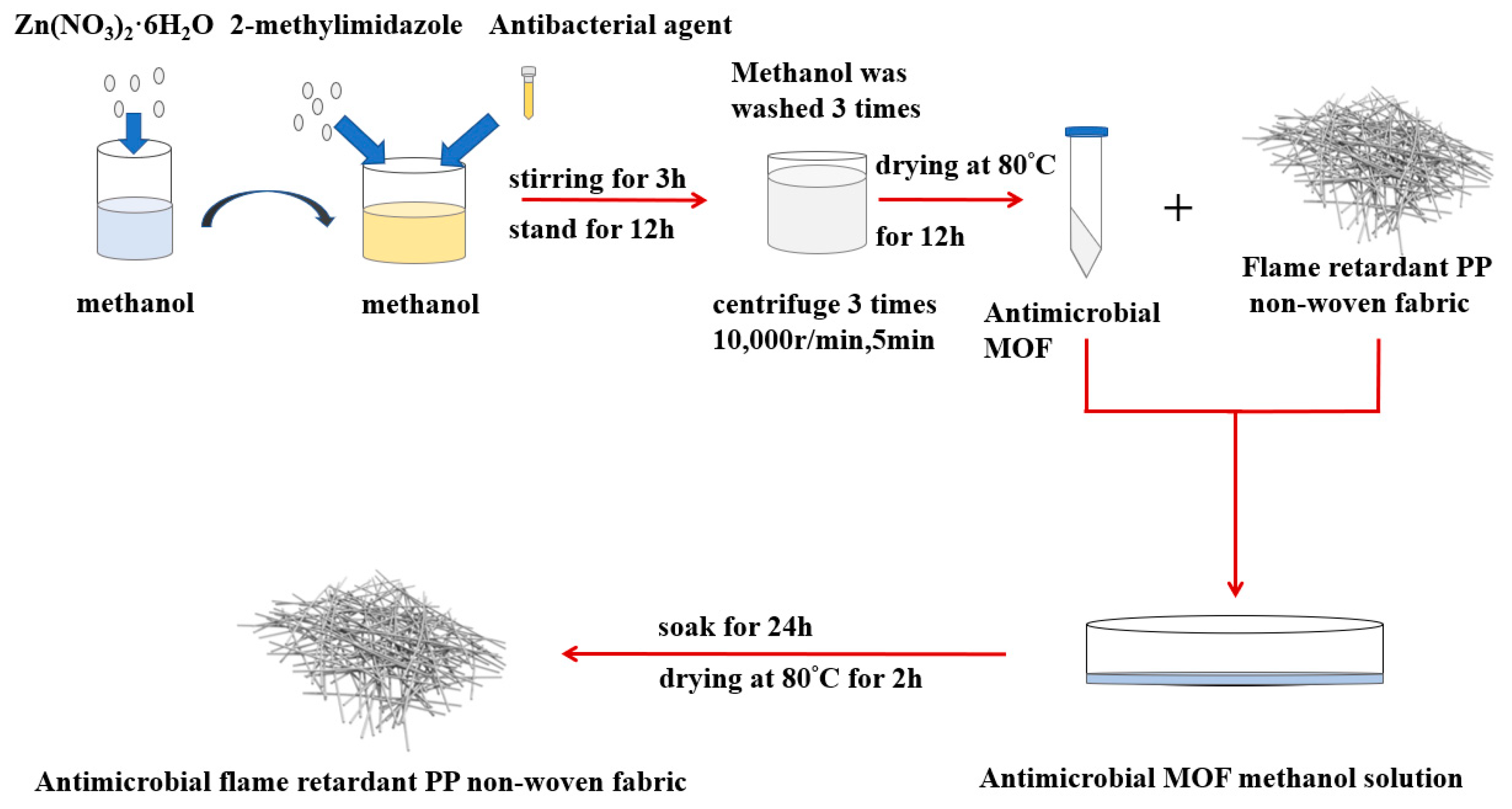

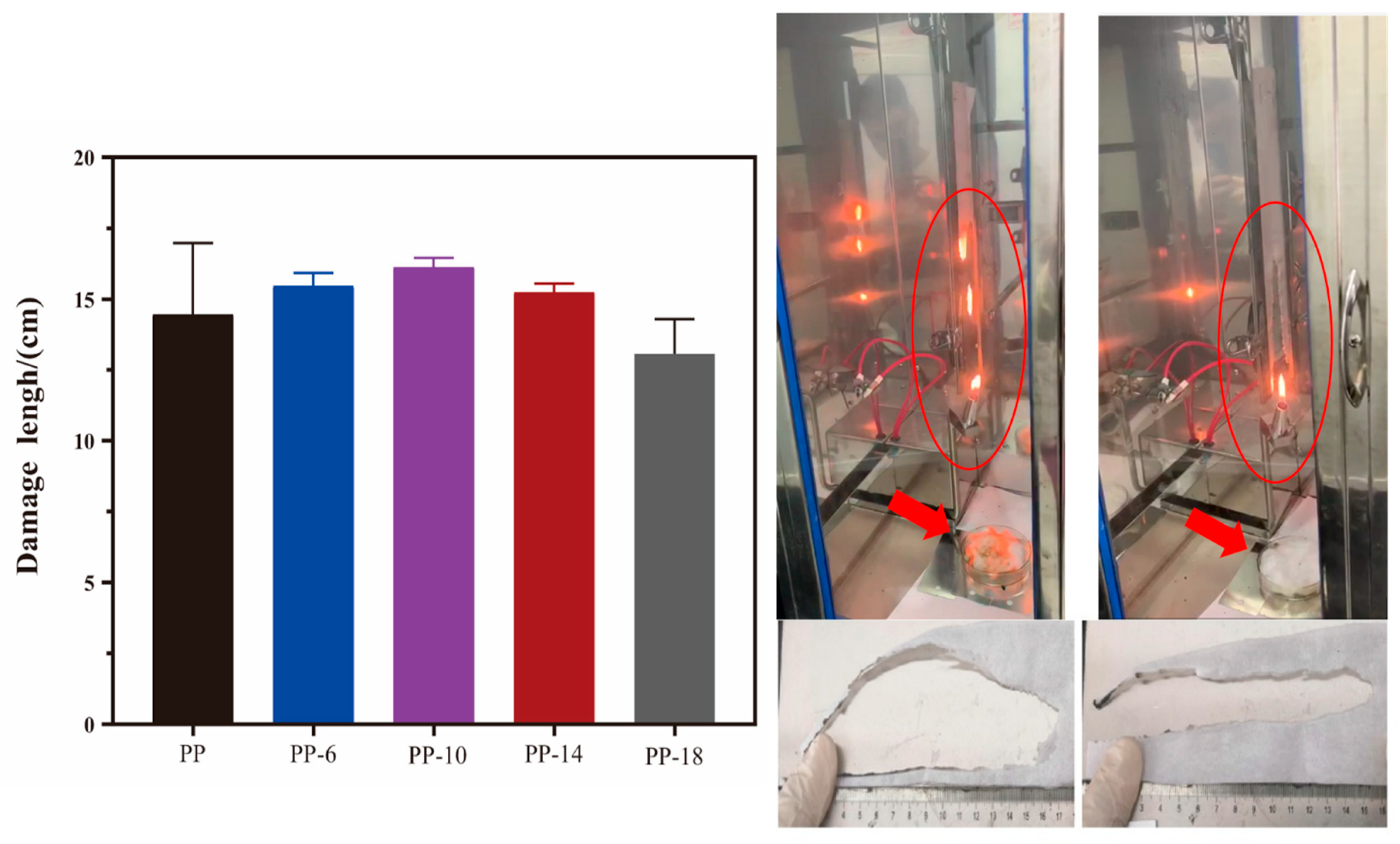

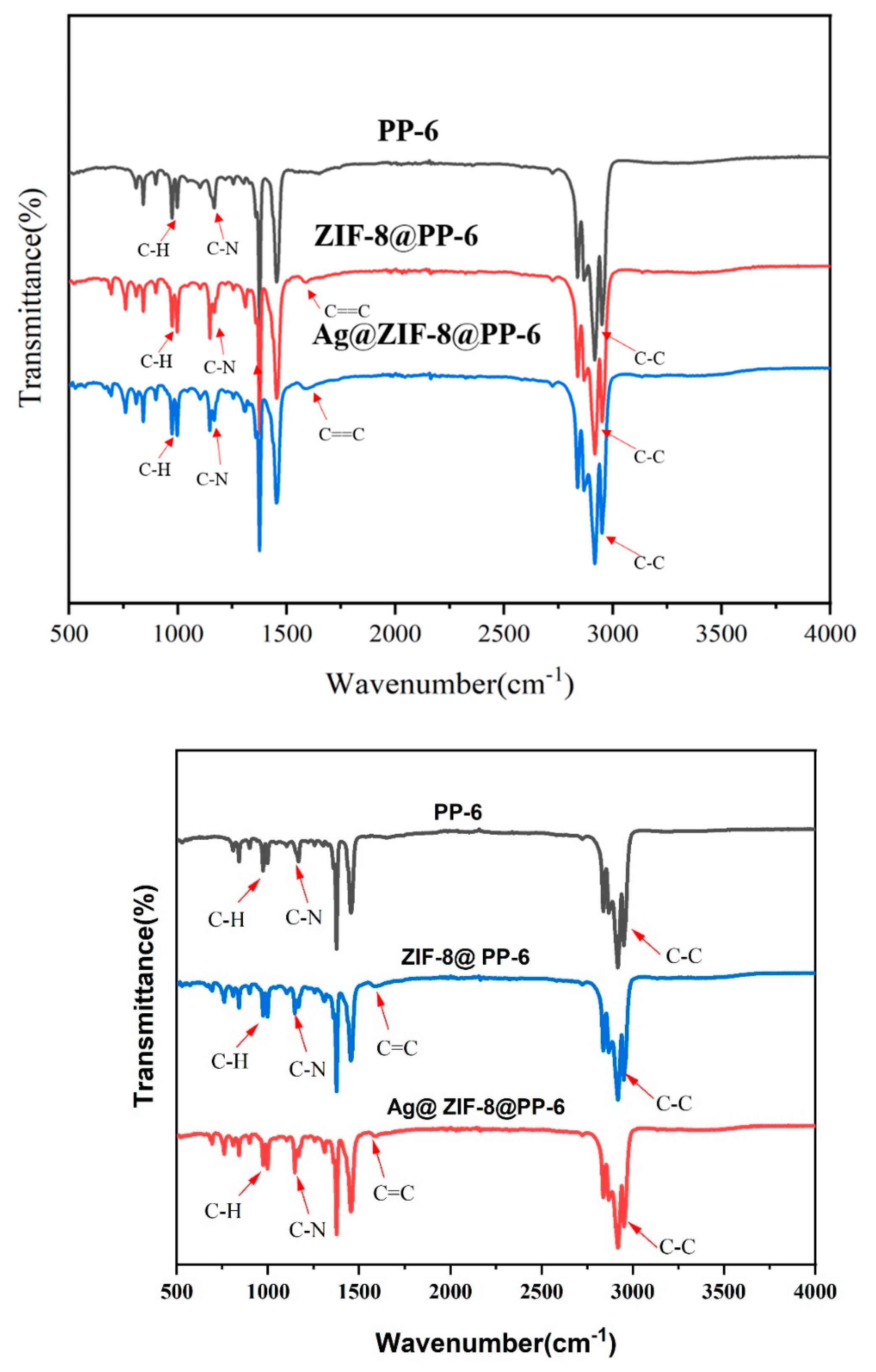
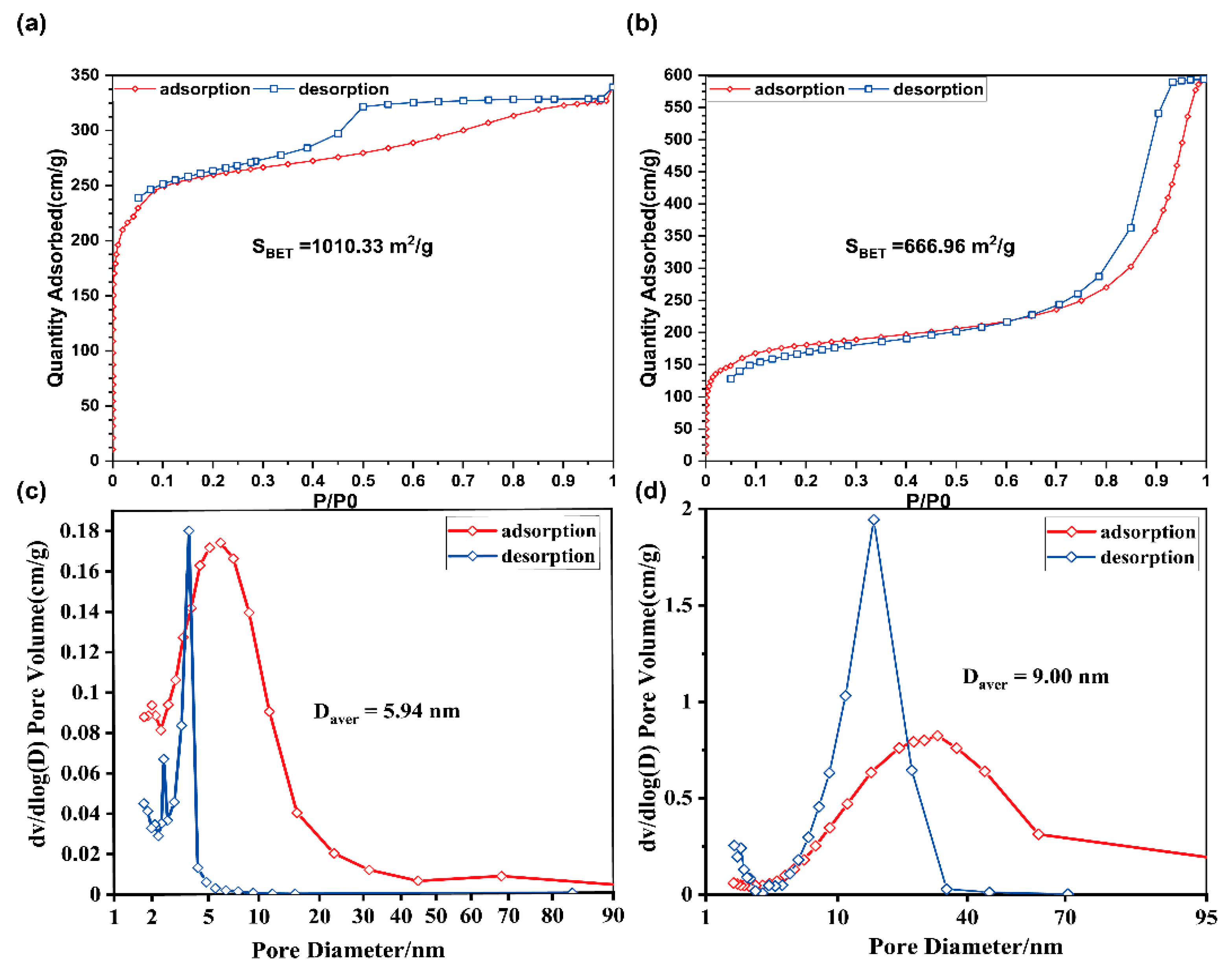
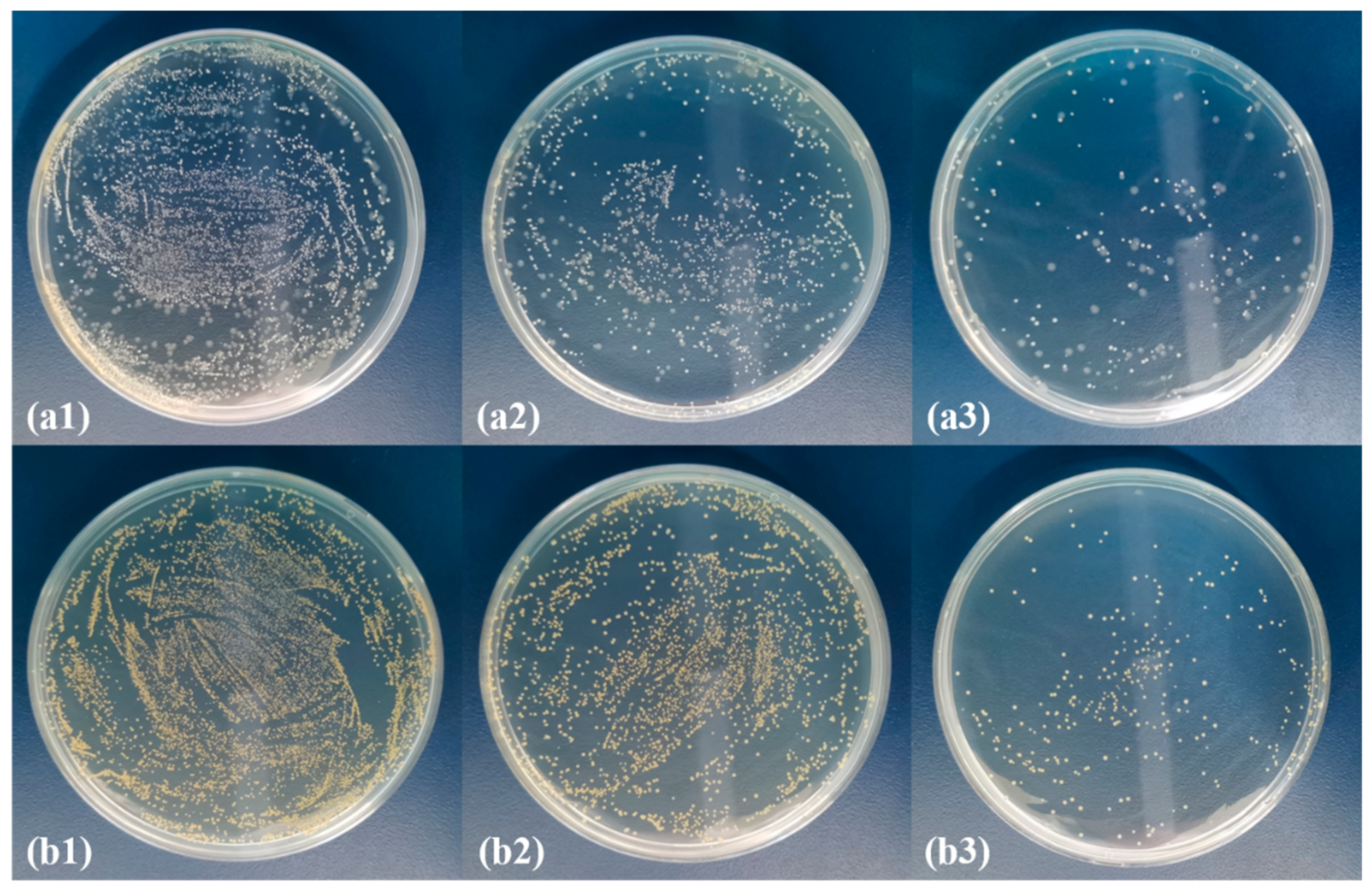

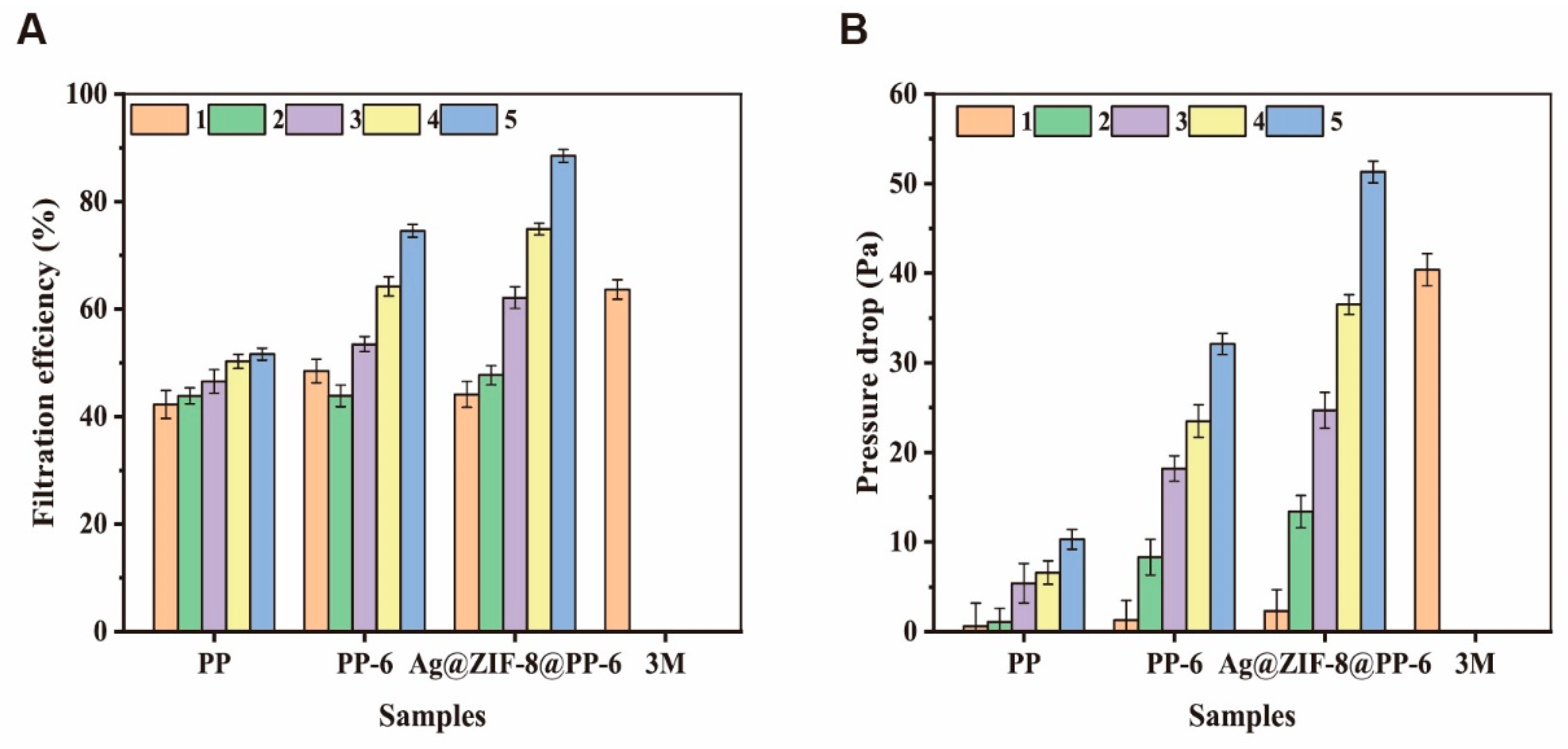
| Zone (1) °C | Zone (2) °C | Zone (3) °C | Pipeline (4) °C | Metering Pumps (5) °C | Nozzles Die Assembly Temperature (6) °C | Hot Air Outlet (7) °C |
|---|---|---|---|---|---|---|
| 165 | 240 | 270 | 290 | 265 | 255 | 235 |
Publisher’s Note: MDPI stays neutral with regard to jurisdictional claims in published maps and institutional affiliations. |
© 2021 by the authors. Licensee MDPI, Basel, Switzerland. This article is an open access article distributed under the terms and conditions of the Creative Commons Attribution (CC BY) license (https://creativecommons.org/licenses/by/4.0/).
Share and Cite
Shiu, B.-C.; Zhang, Y.; Yuan, Q.; Lin, J.-H.; Lou, C.-W.; Li, Y. Preparation of Ag@ZIF-8@PP Melt-Blown Nonwoven Fabrics: Air Filter Efficacy and Antibacterial Effect. Polymers 2021, 13, 3773. https://doi.org/10.3390/polym13213773
Shiu B-C, Zhang Y, Yuan Q, Lin J-H, Lou C-W, Li Y. Preparation of Ag@ZIF-8@PP Melt-Blown Nonwoven Fabrics: Air Filter Efficacy and Antibacterial Effect. Polymers. 2021; 13(21):3773. https://doi.org/10.3390/polym13213773
Chicago/Turabian StyleShiu, Bing-Chiuan, Ying Zhang, Qianyu Yuan, Jia-Horng Lin, Ching-Wen Lou, and Yonggui Li. 2021. "Preparation of Ag@ZIF-8@PP Melt-Blown Nonwoven Fabrics: Air Filter Efficacy and Antibacterial Effect" Polymers 13, no. 21: 3773. https://doi.org/10.3390/polym13213773
APA StyleShiu, B.-C., Zhang, Y., Yuan, Q., Lin, J.-H., Lou, C.-W., & Li, Y. (2021). Preparation of Ag@ZIF-8@PP Melt-Blown Nonwoven Fabrics: Air Filter Efficacy and Antibacterial Effect. Polymers, 13(21), 3773. https://doi.org/10.3390/polym13213773








